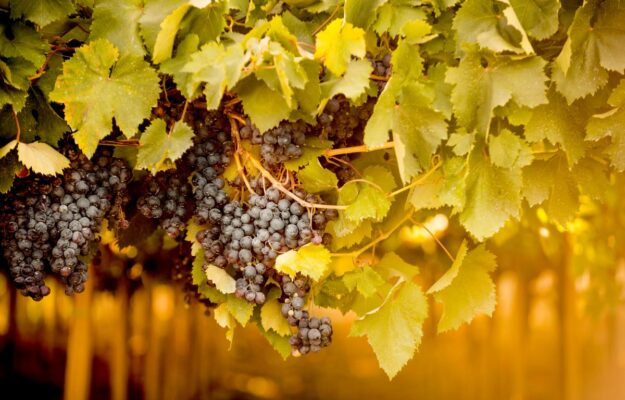The objective stated in the Ministerial Decree draft on the subject of labeling and presenting wines, is to fill various gaps in terms of correct information to the consumer. Applying EU regulations on the subject, the latest version of which has been updated to 2022 (though it is still awaiting definition and approval), would also allow indicating in the product descriptions (usually on the back label, ed.) names of the vines that make up the blends in Denomination wines, as required by regulations. This is not really unusual, except that in Italy, while it is true that many Denominations are indicated exclusively by their geographical reference, such as Chianti, Valpolicella, Chianti Classico, Barolo, Franciacorta, Alto Adige, Soave, Bolgheri, Colli di Luni, Frascati, Costa d'Amalfi, Torgiano, Sicilia and so on, just to name a few, in other denominations, instead, the name of the vine is a component, i.e., Primitivo of Manduria, Verdicchio of Castelli di Jesi, Cannonau of Sardegna, Sagrantino of Montefalco and, specifically Montepulciano of Abruzzi. The Abruzzi wine supply chain, led by the Consorzio Tutela Vini Abruzzo, and represented by the various wine and agriculture associations, Confagricoltura, Confcooperative, Lega Coop, Coldiretti, Copagri, DAQ Vino, Assoenologi and Cia-Agricoltori, is opposing the use of the name Montepulciano, which should be protected and used exclusively for wines produced in the area (the same as, for instance, Cannonau of Sardegna, Albana of Romagna, Erbaluce of Caluso, Sagrantino of Montefalco and so on), however, allowing winegrowers that have legitimately planted and utilized the Montepulciano vine to indicate the synonym, as other denominations have done,(for instance the Calabrian variety is called Nero d’Avola in Sicily for PDO and PGI wines from grapes harvested in the Sicily Region). “It could become a problem and create serious damage for us, as well as for other denominations”, Alessandro Nicodemi, president of the Consorzio Vini d’Abruzzo, pointed out to WineNews.
They are specifically opposed to “article 16, which if approved, would compromise one of the largest denominations of Italian still red wine, Montepulciano d’Abruzzo. The denomination has, for several years now, produced more than 100 - 120 million bottles, which are sold all over the world”, a note from the Consortium explained. The Consortium has signed a document together with other representatives on the supply chain, which will be sent, shortly, to the Regional and National authorities as well as to the supply chain organizations, “because the proposal of a sort of “indiscriminate liberalization” of grape variety names on the label, without exception, which instead is allowed for other grape varieties and synonyms, would cause incalculable damage, not only in economic terms, but also in terms of communication, creating a real market distortion, and obtaining the opposite effect to the reason for the rule”. The text, as it is formulated, “will cause incalculable damage to all the vine-denominations that are a unique heritage of our National enology, from economic and communication points of view, creating a clear conflict with the prestigious and protected Made in Italy brand, whose value is determined by our coveted wine “biodiversity”.
The Montepulciano vine in the Abruzzi territory, recalls the Consortium, dates back to over two centuries ago. Thanks to the Region’s particular microclimate, it has found the ideal conditions to grow and produce high quality wines. The “Montepulciano d’Abruzzo” denomination was acknowledged in 1968 a denomination-vine, and as such recognized and protected with special rules. Over the years it has become an enological giant not only regionally, but Nationally as well, and as such must continue to be protected.“The use of a synonym would guarantee communicating the correct information to the consumer - a principle that must be respected - and the historical heritage of the grape variety denominations”, Nicodemi added. “We must defend the work of hundreds of professionals who, over the decades, have invested, and continue to invest considerable resources to promote and confirm Montepulciano d’Abruzzo, the most prestigious Regional DO wine, on International markets, which is absolutely linked to a vine (Montepulciano) and to our territory. Therefore, if it is not adequately protected, it could be “trivialized” and used by other professionals for “mere commercial purposes” only, to the detriment of its unanimously recognized historic roots in the territory”. Regarding this, on March 10, 2023 the Consortium had forwarded a request to the Ministry of Agriculture to reinstate the synonym, “Cordisco” for the “Montepulciano” vine in the National Register of Vine Varieties, because it had been “present in the Register of 1988, and then disappeared for no reason whatsoever in the digital transformation”, the president Nicodemi explained to WineNews, to safeguard the protected Designation of Origin, “Montepulciano d’Abruzzo” and the term/name of the grape variety, “Montepulciano”, from improper use of the same.
“It is correct to inform the consumer, but at the same time, it is possible to protect the denominations that have the name of the vine linked to history, in their name without damaging them”, Alessandro Nicodemi, president of the Consorzio Vini d’Abruzzo, concluded. This issue will continue developing over the next few months, since it seems that in autumn the draft decree will return to the State-Regions Conference, where a unanimous vote will be needed but, obviously, “rebus sic stantibus”, will not happen.
Copyright © 2000/2025
Contatti: info@winenews.it
Seguici anche su Twitter: @WineNewsIt
Seguici anche su Facebook: @winenewsit
Questo articolo è tratto dall'archivio di WineNews - Tutti i diritti riservati - Copyright © 2000/2025








































































































































































































